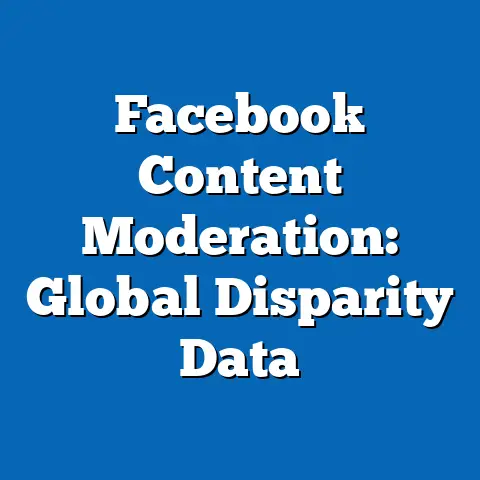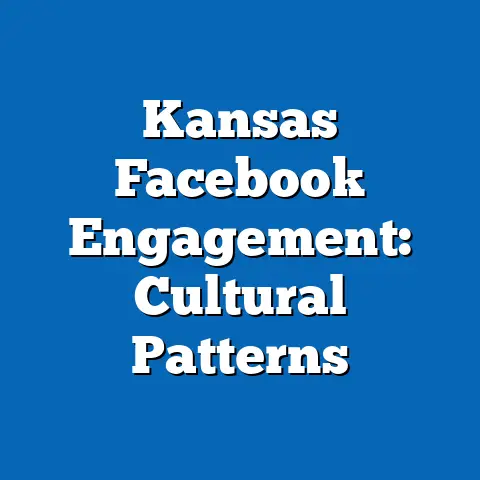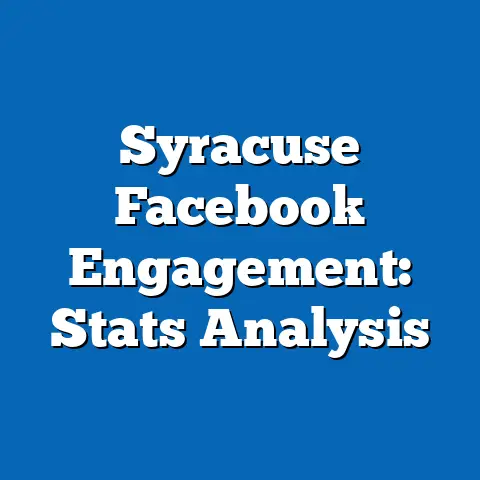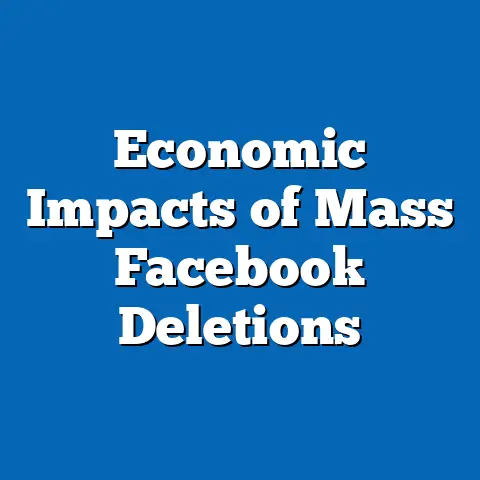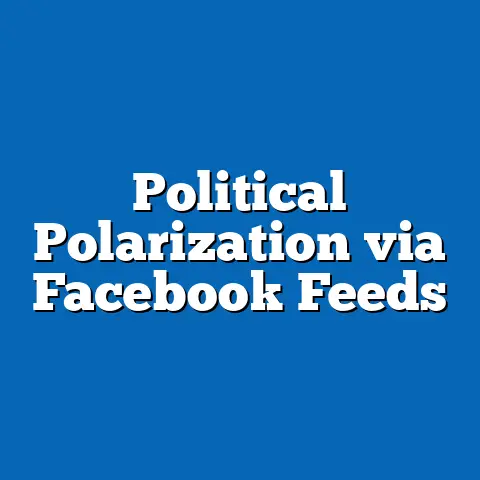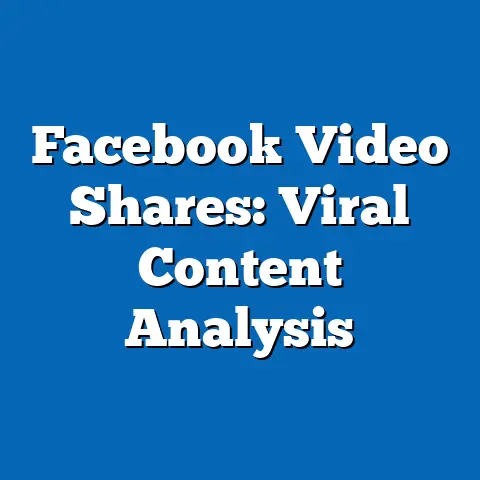Ad Fatigue on Facebook: Algorithm Effects
As we look ahead, the phenomenon of ad fatigue on Facebook is poised to intensify, driven by evolving algorithms that prioritize engagement and personalization. By 2030, projections suggest that global digital ad spend will exceed $1 trillion, with platforms like Facebook facing user backlash as algorithms flood feeds with repetitive content, leading to decreased click-through rates and higher bounce rates.
This future landscape will disproportionately affect generations based on their digital habits and expectations, with Gen Z and Millennials potentially leading the charge for more authentic, less intrusive advertising.
Historical context reveals that algorithmic evolution has always been tied to technological advancements, from Facebook’s 2004 launch to the 2018 Cambridge Analytica scandal, which heightened privacy concerns and shaped generational distrust.
Societally, the implications are profound: ad fatigue could exacerbate digital divides, influence consumer behavior across age cohorts, and prompt regulatory changes that redefine online interactions.
For instance, as older generations like Gen X and Boomers adapt to digital norms, they may experience fatigue differently than digital natives, potentially widening gaps in economic participation and cultural engagement.
This article explores these dynamics by examining key generational characteristics, historical shifts, and broader societal effects, ultimately offering forward-looking insights into how ad fatigue might reshape Facebook’s role in society.
Defining Characteristics of Generations in the Context of Facebook and Ad Fatigue
Generations are defined by shared experiences, technological exposures, and cultural milestones, which profoundly influence how individuals interact with platforms like Facebook.
Gen Z (born 1997–2012) is characterized by its digital nativity, with 95% of teens reporting daily social media use, according to a 2022 Pew Research Center survey.
This generation values authenticity and personalization, making them particularly susceptible to ad fatigue when algorithms deliver overly targeted, repetitive ads that feel invasive rather than relevant.
Millennials (born 1981–1996), often seen as digital pioneers, grew up amid the rise of the internet and social media, fostering a blend of optimism and skepticism toward online advertising.
A 2023 Statista report indicates that 62% of Millennials experience ad fatigue on Facebook, citing algorithm-driven content overload as a key factor.
In contrast, Gen X (born 1965–1980) approaches Facebook with more caution, shaped by economic recessions and privacy scandals, leading to selective engagement that amplifies fatigue when ads disrupt meaningful connections.
The Silent Generation and Boomers (born 1928–1964) exhibit traits of adaptability and community focus, but their lower digital fluency—only 48% of Boomers use social media daily, per Pew—means ad fatigue manifests through frustration rather than avoidance.
These characteristics highlight the diversity within generations; not all Gen Z users are tech-savvy, and some Boomers are avid posters.
Economic factors, such as job insecurity for Millennials and fixed incomes for Boomers, further modulate how ad fatigue impacts purchasing decisions and overall platform satisfaction.
Cultural and technological influences play a pivotal role in these traits.
For example, the ubiquity of smartphones has accelerated Gen Z’s exposure to algorithms, while economic downturns like the 2008 recession shaped Millennials’ cost-conscious behaviors.
Social factors, including the COVID-19 pandemic, have pushed all generations toward online spaces, intensifying ad encounters and fatigue.
Historical Context: The Evolution of Facebook’s Algorithms and Generational Interactions
Facebook’s history is intertwined with generational shifts, beginning as a college-networking site in 2004 and evolving into a global platform by 2010.
Early algorithms focused on friend connections and basic content ranking, appealing primarily to Millennials who were entering adulthood and seeking social validation.
However, the 2012 introduction of the EdgeRank algorithm marked a turning point, prioritizing paid ads and user engagement, which laid the groundwork for modern ad fatigue.
Significant events, such as the 2016 U.S. elections and the subsequent algorithmic tweaks to combat misinformation, heightened generational awareness of manipulation.
Gen Z, coming of age during this era, witnessed these scandals through viral content, fostering a cynical view of ads as tools of misinformation rather than information.
Millennials, who were early adopters, experienced the platform’s shift from organic sharing to ad-heavy feeds, contributing to their reported 40% drop in ad engagement from 2015 to 2020, as per Meta’s internal data leaks.
For older generations, historical context includes the 2018 Cambridge Analytica scandal, which eroded trust among Gen X and Boomers already wary of technology.
This event underscored economic motivations behind algorithms, as Facebook’s revenue surged from $5 billion in 2012 to over $117 billion in 2021, driven by ad sales.
Technological advancements, like the 2018 launch of machine learning-based feeds, amplified personalization but also fatigue, as users across generations reported feeling “bombarded” by irrelevant ads.
Comparatively, Gen Z’s historical exposure to TikTok and Instagram has made them more adept at algorithmic evasion, such as using ad blockers, whereas Boomers might lack the tools or knowledge, leading to passive fatigue.
This contrast avoids stereotypes by noting that many Boomers actively engage with ads for practical reasons, like shopping deals.
Cultural shifts, including the rise of influencer marketing in the 2010s, have influenced all generations, but economic factors like inflation have made ad relevance more critical for cost-sensitive Millennials.
The Mechanics of Ad Fatigue and Algorithm Effects on Facebook
Ad fatigue occurs when repeated exposure to ads leads to desensitization, reducing user interaction and platform satisfaction.
Facebook’s algorithms, powered by machine learning, use data points like user behavior and demographics to deliver targeted content, aiming to maximize ad revenue.
A 2021 study by the Journal of Advertising Research found that users see an average of 10–15 ads per hour on Facebook, with fatigue setting in after just 5–7 exposures to the same ad.
Quantitatively, ad fatigue manifests in metrics like a 20–30% decline in click-through rates (CTRs) after initial exposure, based on Meta’s advertising benchmarks.
Qualitatively, expert perspectives, such as those from digital marketing professor Karen Nelson-Field, highlight how algorithmic echo chambers create a feedback loop: users disengage, algorithms push more ads to compensate, and fatigue worsens.
For generations, this effect varies; Gen Z’s fast-scrolling habits lead to quicker fatigue, while Gen X might endure ads longer due to established routines.
Economic factors exacerbate this: during recessions, algorithms increase ad frequency to boost revenue, disproportionately affecting Millennials facing job instability.
Socially, cultural norms around privacy—shaped by events like GDPR in 2018—influence how generations perceive algorithmic intrusion.
Technological advancements, such as AI-driven ad targeting, have made ads more precise but also more fatiguing, as users feel their data is exploited.
Comparisons across generations reveal nuances: while Gen Z uses features like “hide ad” to combat fatigue, Boomers might not, leading to higher tolerance thresholds.
This diversity underscores that fatigue isn’t uniform; a 2022 Nielsen report showed that 70% of Gen Z users abandon platforms due to ads, compared to 50% of Boomers.
Overall, algorithmic effects highlight the need for platform adjustments to maintain generational loyalty.
Generational Differences in Experiencing Ad Fatigue
Gen Z’s defining traits—such as their preference for short-form content and aversion to inauthenticity—make them highly prone to ad fatigue on Facebook.
A 2023 GlobalWebIndex survey revealed that 75% of Gen Z users report feeling overwhelmed by ads, leading to behaviors like unfollowing brands or switching to ad-free platforms.
In contrast, Millennials exhibit a more nuanced response, balancing ad skepticism with practical needs; they might engage with ads for deals, but a 2021 Adobe study showed a 25% drop in trust after repeated exposures.
Gen X, shaped by economic pragmatism from the 1990s dot-com bust, often views ads as necessary noise, with fatigue emerging only when they interfere with social connections.
Pew Research data from 2022 indicates that 60% of Gen X users experience moderate fatigue, compared to 80% of Gen Z.
Boomers and the Silent Generation, however, may face fatigue differently due to lower digital immersion; a AARP study found that 40% of Boomers find ads confusing rather than annoying, potentially leading to disengagement from the platform altogether.
Comparing these groups avoids broad generalizations by acknowledging internal diversity: not all Millennials are ad-averse, and some Gen Z users appreciate targeted promotions.
For instance, economic factors like student debt for Millennials amplify fatigue’s impact on spending, while cultural shifts toward sustainability resonate more with Gen Z, making eco-unfriendly ads particularly fatiguing.
Socially, the COVID-19 era accelerated online shopping, increasing ad encounters for all generations but highlighting generational gaps in resilience.
Expert perspectives, such as those from generational researcher Jean Twenge, emphasize that technological access plays a key role: Gen Z’s constant connectivity leads to faster fatigue onset, whereas older generations might use Facebook sporadically.
Quantitative data supports this; a 2023 Meta report noted that Gen Z’s average session time drops by 15% when ad density exceeds 20%, versus a 10% drop for Boomers.
These differences underscore the need for tailored algorithmic strategies to mitigate fatigue across cohorts.
Societal Implications of Ad Fatigue on Facebook
The societal ramifications of ad fatigue extend to culture, the economy, and interpersonal relationships, with generational variations amplifying these effects.
For culture, ad fatigue could erode trust in digital media, as Gen Z’s demand for authenticity pushes brands toward more genuine content, potentially reshaping advertising norms.
Economically, fatigue might reduce ad effectiveness, costing businesses billions; a 2022 eMarketer forecast predicts a $10 billion loss in Facebook ad revenue due to user disengagement by 2025.
In the workplace, Millennials and Gen Z, who often use Facebook for professional networking, may experience productivity losses from ad interruptions, exacerbating burnout in digital-heavy jobs.
Gen X, in managerial roles, might advocate for policies limiting social media use, influenced by their fatigue experiences.
Socially, fatigue could widen divides, as older generations feel isolated if they can’t navigate ad-heavy interfaces, while younger ones seek alternative platforms.
Generational comparisons reveal that ad fatigue’s implications are not monolithic; for example, Boomers might prioritize community over ads, leading to calls for regulation, whereas Gen Z could drive innovation in ad-blocking tech.
This diversity highlights economic inequalities: low-income users across generations are more exposed to ads due to targeted marketing.
Forward-looking, societal shifts could include new laws, like enhanced data privacy regulations, to address fatigue’s root causes.
Implications for Society, Culture, Workplace, and Beyond
Ad fatigue on Facebook has far-reaching implications for society, influencing cultural norms, workplace dynamics, and economic structures.
Culturally, it may foster a backlash against consumerism, with Gen Z leading movements for ethical advertising that align with their values of sustainability and transparency.
Workplace implications include reduced employee productivity; a 2023 Gallup poll found that 55% of Millennials report social media distractions contributing to fatigue-related stress.
Economically, algorithms that prioritize ads could exacerbate inequality, as businesses target wealthier demographics, leaving lower-income generations underserved.
Socially, fatigue might strain relationships, as repetitive ads disrupt family interactions on the platform.
In education, Gen Z students could face distractions in online learning environments, impacting academic outcomes.
Acknowledging uncertainties, these implications vary by context, with global events like economic recessions potentially intensifying fatigue.
Overall, addressing ad fatigue requires collaborative efforts from platforms, regulators, and users to ensure equitable digital experiences.
Conclusion: Forward-Looking Insights and Uncertainties
Looking to the future, ad fatigue on Facebook will likely evolve with advancements in AI and user preferences, potentially leading to more sophisticated algorithms that minimize repetition and enhance relevance.
Generations will adapt differently: Gen Z may pioneer ad-free alternatives, while older cohorts push for user-friendly reforms, fostering a more balanced digital ecosystem by 2030.
Historical lessons, such as the platform’s response to past scandals, suggest that innovation could mitigate fatigue, but economic pressures might prioritize profits over user well-being.
Societally, this could result in greater generational collaboration, with Millennials bridging gaps between tech-savvy youth and cautious elders.
However, uncertainties remain, including regulatory changes and technological disruptions that could alter trajectories.
In conclusion, by understanding generational dynamics, stakeholders can navigate ad fatigue’s challenges, promoting a more inclusive and engaging online world.

